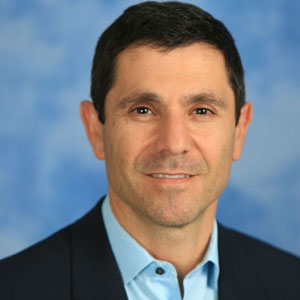THANK YOU FOR SUBSCRIBING

Fin B. Bonset, CM Director of Aviation Services, VHB
A viation technology, like airplanes, comes in many forms, shapes, and sizes. The proverbial “golden egg” in our fast-moving and ever ascending (pun intended) industry today is predicting future infrastructure requirements within an all-encompassing airport system where different technologies are more seamlessly integrated and essential subsequent output information is delivered to the airport planners. This output data can then be used to ascertain current capacity levels or predict future demand for service, all the while keeping in mind that the passenger customer experience is front and center when planning for infrastructure development. The good thing is, we are getting there!
Because of Moore’s Law, we now have computing power capable of big data processing and therefore the capacity to virtually simulate, using subsequent Artificial Intelligence (AI) integration, more components of our system within one realm. That realm has its data points which includes data gathered through modern every-day technology feeders such as apps and social media, to specific military-spec type technologies often used by the Federal Government (in our case the Federal Aviation Administration - FAA) orby airport management/operations personnel such as ground-based radar for air traffic/ramp control and GIS for to monitor airport facilities and overall assets. These technologies and their subsequent data can be also be useful to predict the most important question of all when it comes to our aviation realm: “Can our current airport capacity handle future demand at an acceptable level of passenger service”.
When it comes to understanding and determining existing and future airport capacity, prediction technology in the form of modeling/simulation is the key. The basis for all simulation is a good data set that takes aim at predicting future demand (the proverbial crystal ball), normally set in 5, 10, and 20-year increments during the airport master planning process. This forecasting process is usually conducted by aviation consultants through proprietary in-house software that mostly consists of multiple linear regression type spreadsheets fed by FAA and industry trend data from aircraft manufacturers and economic information from State and local governments. This process is not anticipated to change significantly in the future; however, what you do with these forecast numbers will determine your airport facility requirements and this is where simulation is the key to ascertain whether or not the demand matches overall capacity.
There are three components in the airport operations world that have been traditional segregated based simply on the disparities in how passengers, airplanes and bags are being processed within different spatial guidelines related to specific levels of service.
When it comes to understanding and determining existing and future airport capacity, prediction technology in the form of modeling/ simulation is the key
The aviation simulation/modeling industry is a small one. Only a few companies have created specific modeling software for airport components. Software such as Atac’sSimmod® Pro and Jeppesen’s Total Airspace and Airport Modeler (TAAM)®have traditionally provided airside gate-to-gate simulation across every phase of an operation, including gate usage, ground handling, deicing, taxiing, and airspace transit. However, these software packages do not model passenger behavior. In addition, these two software packages provide only some 3D elements. Enter the new software packages in the market today, now completely engulfed in their all-encompassing 3D environments. Newer software packages such as Transoft Solutions’ArcPort and AirTOp suites,and ARC’s CAST now simulate aircraft airspace and ground traffic, terminal passenger flow and processing, ground handling traffic, and curbside/ parking traffic in a scalable and adjustable 3D environment. AI based on predicted and observed passenger behavior specific to an airport can now also be programmed into these software packages where you can virtually see a 3D passenger enter the airport from a vehicle or train, check-in their bags, go through security or customs, enter the terminal hold-rooms and shop at its amenities, then enter the passenger boarding bridge, enter their seats on a 3D airplane at the gate and then switch to the aircraft taxiing and taking off into the surrounding complex airspace. Soup to nuts!
The beauty of tying all these elements together is that the airport planner can now program in the various levels of anticipated demand and determine whether or not existing airport components can handle the passengers and/or aircraft, or if a new terminal design concept works for the anticipated long-term demand. In addition, output can show the links between the various multi-modal components and whether or not vehicular traffic has an impact on security lines or whether aircraft delays have an effect on gate capacity, for example. More importantly, the latest modeling software packages related to passenger flows and spatial requirements can now predict the International Air Transport Association (IATA) guidelines for different levels of services based on acceptable queuing times and physical spatial distances between passengers and facilities.
The golden egg of tying together all airport system components may have been found but the challenges these software companies face today come from the ever-changing key performance indicators (KPIs) that are useful to an airport operator. It seems that the airlines, the FAA, air traffic control, local/state governments, and airports all use different indicators for capacity assessments related to their respective fields. Hence, the next challenge we face as an industry is how airport planner and these software companies can cater to these metrics and provide what is needed in a meaningful way that works for all interested stakeholders. This would be the platinum egg!
Weekly Brief
I agree We use cookies on this website to enhance your user experience. By clicking any link on this page you are giving your consent for us to set cookies. More info
Read Also
Navigating Compliance Challenges in ESG AML and Digital Onboarding
A Vision for the Future: Automation, Robotics, and the Smart Factory
The Rise of Hyper Automation
Transforming Business Operations with Robotic Process Automation
Combining Automation with AI to Achieve Human-Like Interaction
Implementing RPA - 5 Ultimate Prerequisite
Incorporating the power of recognition into our vendors' sustainability journey
Elevating Guest Experience with Data






















